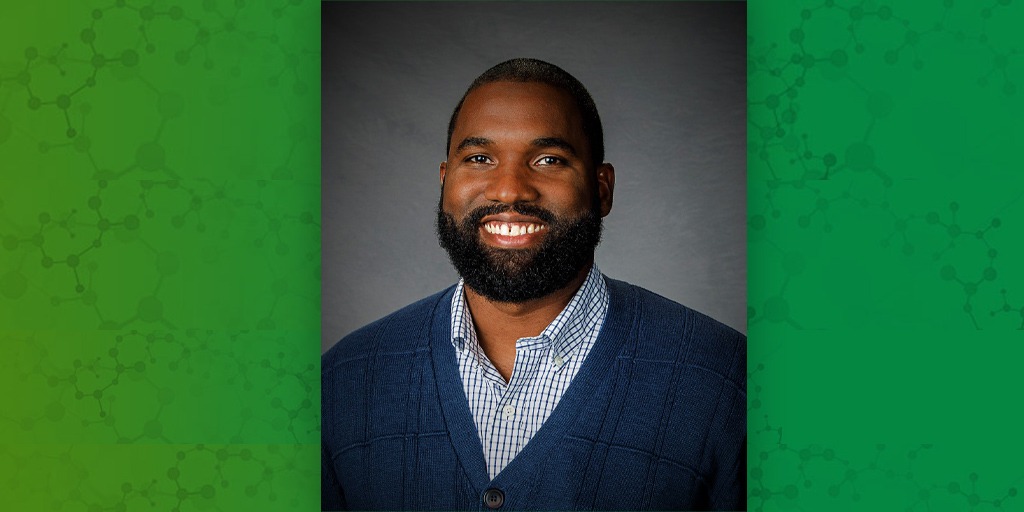Highlighting the work of early-stage investigators (ESIs) has been a major part of annual meetings of the NIEHS Environmental Health Sciences (EHS) Core Centers. Although the COVID-19 pandemic temporarily derailed plans for a face-to-face meeting hosted by the Mount Sinai Transdisciplinary Center on Early Environmental Exposures, center members Maria José Rosa, Dr.P.H., and Douglas Walker, Ph.D., proposed a virtual webinar series to keep a spotlight on the work of ESIs at the EHS Core Centers. Program Director Claudia Thompson, Ph.D., and Community Engagement Core Coordinator Liam O’Fallon supported their effort and helped launch a new monthly speaker series. The inaugural ESI Spotlight Webinar took place Jan. 12.
Cetewayo Rashid, Ph.D., an assistant professor at the University of Kentucky, discussed his research into the health effects of an organophosphate flame retardant. He is affiliated with the university’s Center for Appalachian Research in Environmental Sciences.
Joseph Romano, Ph.D., a postdoctoral researcher at the University of Pennsylvania, shared his work to advance toxicological research through artificial intelligence. He is affiliated with the university’s Center of Excellence in Environmental Toxicology.
Flame retardants and metabolic syndrome
Rashid described his work using a mouse model to examine links between exposure to the flame retardant tris(1,3-dichloro-2-propyl) phosphate, known as TDCPP, and metabolic disruption.
Although the flame retardant pentabromodiphenyl ether was phased out of use in upholstery and other commercial applications beginning in 2004, the substance was largely replaced by TDCPP. He noted that in the body, the chemical is broken down to bis(1,3-dichloro-2-propyl) phosphate (BDCPP), and 90% of Americans have detectable levels of BDCPP in their urine.
Sharing data from the National Health and Nutrition Examination Survey, Rashid pointed out that there is a significant positive association between urinary BDCPP levels and metabolic syndrome in men. Of the five metabolic syndrome components, BDCPP levels primarily correlated with abdominal fat and hyperglycemia, both of which increase risk for type 2 diabetes.
“We performed various metabolic tests in mice and found a dose-dependent increase in percent body fat and decreased insulin sensitivity in response to TDCPP exposure,” Rashid said. “These data support a causal relationship between TDCPP exposure and male sex-specific metabolic disruption.”
Artificial intelligence in toxicology
 Romano received his Ph.D. in biomedical informatics from Columbia University in 2019. (Photo courtesy of Kevin Peragine Photography)
Romano received his Ph.D. in biomedical informatics from Columbia University in 2019. (Photo courtesy of Kevin Peragine Photography)Romano introduced an online toolkit called ComptoxAI, which he developed to support the use of artificial intelligence in computational toxicology.
“ComptoxAI is entirely open-access and under active development,” he said. “Everything can be run on your own home computer, and community involvement is encouraged.”
Developing and applying new tools that combine advanced artificial intelligence methods with publicly available data are major goals of the initiative, Romano explained. He said that the digital portal will enable scientists to discover new associations between toxic environmental exposures and clinically important human diseases.
“We want to use ComptoxAI to look at hypotheses backed up by experimental evidence, and by synthesizing different types of evidence, focus on things that we couldn’t see before,” Romano said. “We want to synthesize new knowledge.”
Among other features, ComptoxAI provides a large graphical database of toxicology-related biomedical knowledge; a suite of information retrieval tools; algorithms for analyzing data on chemicals, genes, diseases, chemical assays, and more; and tools to help researchers categorize the computational toxicology data they generate.
“We’re continuously developing new [features] to make all of these functionalities accessible,” Romano said. “We want every toxicologist or every person who’s interested in learning about toxicology to be able to run this and generate really exciting results that they can interpret themselves.”
(John Yewell is a contract writer for the NIEHS Office of Communications and Public Liaison.)
Source link
factor.niehs.nih.gov


